A different view of Yosemite’s Half Dome
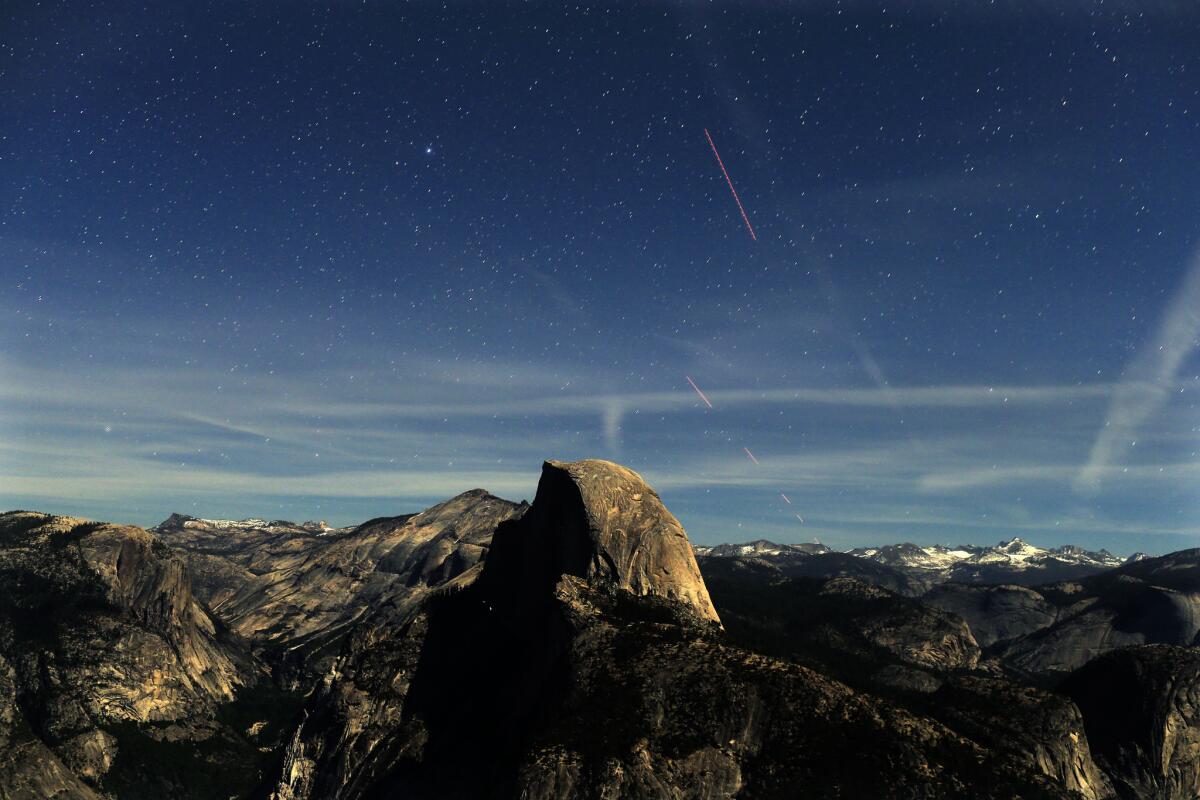
Half Dome in Yosemite National Park is a California icon, and there’s more than one way to look at it — from the unrounded side, for example.

Japanese artist Hokusai liked Mt. Fuji. Really liked it. So in the 1820s and 1830s, he made a series of 36 woodblock prints of the mountain, from near and far, in summer and winter. When they went over well, he made 10 more scenes. Then, because an artist must follow his muse, he started a new series: 100 views of Mt. Fuji.
When I'm looking at Half Dome, the great granite hood ornament of Yosemite National Park, I understand Hokusai and Fuji. You see Half Dome on a century's worth of postcards, on Ansel Adams prints and Sierra Club calendars, on your waiter's name tag at the Wawona Hotel, on the new California driver's licenses.
Yet to me, it seems inexhaustible.
When I visited Yosemite with photographer Mark Boster in late May, we glanced at a few other popular spots, but mostly we chased Half Dome variations. Though we didn't summit the big rock — the climbing cables weren't in place for the season — we saw it from so many directions and elevations that I started thinking of it as the third member of our traveling party.
Some people say Half Dome looks like a football helmet or a broken bowling ball. I always saw a dented ranger's hat. Until this trip.
For a proper introduction or a ritual re-introduction, a traveler heads from the park's south entrance to the Tunnel View turnout. You may find yourself standing in a crowd — on a busy day, 5,000 people pause here — but you'll spot Half Dome, bracketed by El Capitan to the left, Cathedral Rocks and Bridalveil Fall to the right. And if the crowds are thin, you may think: This is the place. No view can match this. But just up the road, plenty can.
Bob Roney, author of "The Road Guide to Yosemite" and a ranger here for 40-plus years, met us at Tunnel View to explain how a work crew in the early 1930s spent months creating a shortcut for travelers, using a ton of blasting powder daily to make about 20 feet of progress.
Eventually, they had the Wawona Tunnel, nearly a mile long, and a small mountain of tailings at its east end. And somebody realized that the new mound had a big view.
Naturally, it didn't take long after the tunnel's 1933 opening for Ansel Adams to turn up with his tripod. Before long, Tunnel View was the iconic Yosemite view. It scarcely changed for 75 years, until a 2008 upgrade that smoothed traffic flow and opened up the view by cutting down a bunch of trees. Yes, the park service does that sometimes.
Still, Roney reminded us, no panorama is permanent, especially in a park that records dozens of rockfalls every year. "Sure as time moves forward," Roney said, "this view will be wrecked by some other geologic event," perhaps transformed "into something even more beautiful."
And so to Mirror Lake, which is really a seasonal water hole a mile's walk from the Mirror Lake shuttle-bus stop. In spring, if kids aren't splashing, the still water gives you a perfect reflection of shapely Mt. Watkins to the north. The view is so mesmerizing, in fact, that you might not realize the stone wall just east of you is the base of Half Dome.
And it was near here, at 5:26 a.m. on March 28, 2009, that 115,000 tons of boulders and debris rained down from Ahwiyah Point, 1,800 feet up, near Half Dome. The impact generated a blast of air that leveled hundreds of trees up to 50 yards away. Nobody was hurt. But rockfalls (both naturally occurring and human-caused) occasionally do kill people in Yosemite. Falling rocks dislodged by climbers killed one El Capitan climber on May 20, another on June 2.
I soaked my feet in the shallows, listening for distant rumbles. Then Mark and I headed for the high country.
At Olmsted Point, along Tioga Road, we found a rock scape scoured by ancient ice and peppered with "erratics," stray boulders nudged into strange places by glacial advances. From there, Half Dome is a far-off rounded lump that sometimes glows red at sunset. For us it turned a faint orange.
Another day, we drove to Glacier Point, which is only 7,214 feet above sea level but feels like the roof of the Earth, with jaw-dropping views of the valley. From there you seem to be even with Half Dome (though you're really 1,600 feet below it), and the spectacle is an invitation to consider eternity and forget petty human affairs.
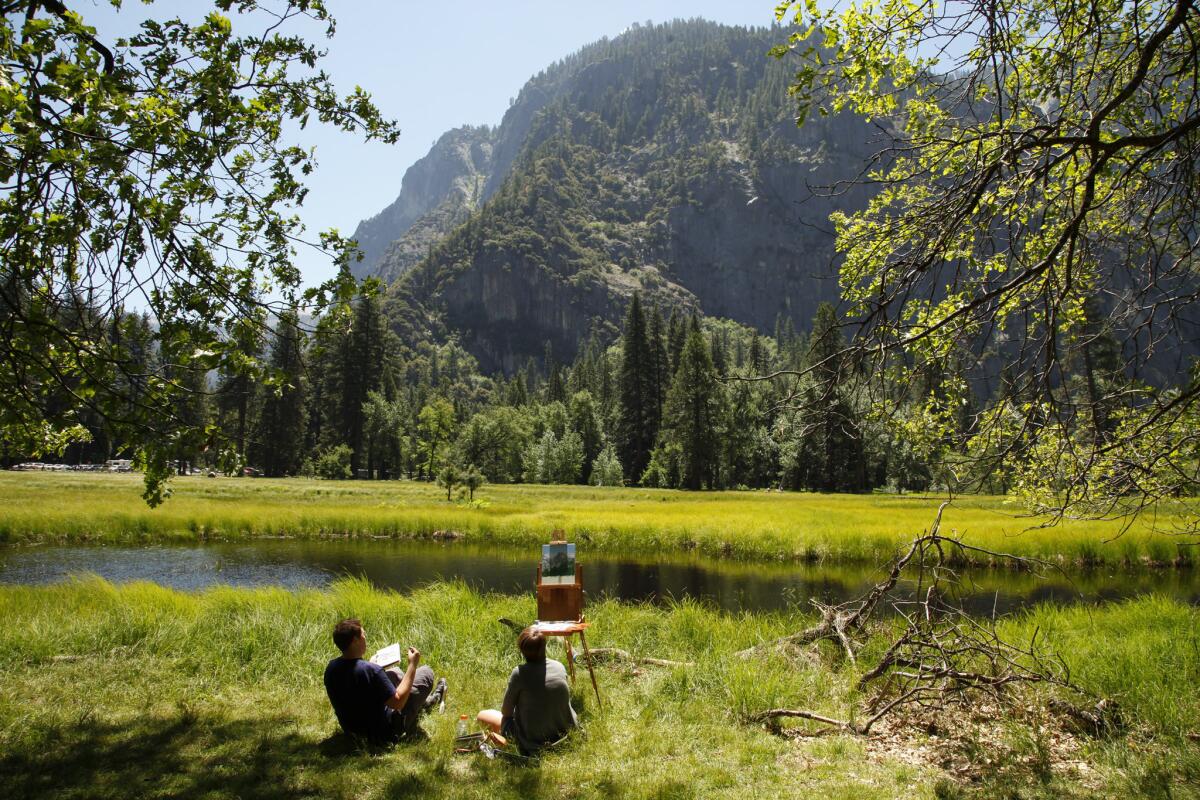
But then you'd miss the hooded photographer fussing with his 8-by-10 camera, or the British tourist dropping to one knee and proposing to his girlfriend (who says yes), or the guy who is about to throw a pebble into the abyss until a second guy threatens to throw him instead.
It got quieter when the sun dipped and set the dome aglow. Then the moon and stars took over. We stayed for hours.
But that's not the view that destroyed my ranger's-hat idea of Half Dome. It was Washburn Point, less than a mile from Glacier Point, that did it.
There, as at Glacier Point, you are reminded how puny Yosemite Valley is: 7 miles long and a mile wide, surrounded by nearly 1,200 more square miles of rugged high-country parkland. But Washburn Point also has a different angle on Half Dome, an angle that shows it isn't a dome at all. To my eyes, it's a thick, uneven slice of bread, maybe the heel of the loaf. Of course, it's epic and all that, but you'd never make it your logo.
The Half Dome we love is the well-rounded idea of Half Dome, as seen from the valley, Olmsted Point and Glacier Point. Seeing its unrounded backside is like being told that Humphrey Bogart never said, "Play it again, Sam" in "Casablanca." Part of you doesn't want to know. And the other part figures that's a good reason to watch the movie again.
Timeline: Yosemite
A look at the history of Yosemite, from the retreat of glaciers to today.
Between 2 million and 10,000 years ago: Pleistocene Ice Age glaciers retreat from Yosemite, leaving deep valleys and carved granite wonders, including Half Dome, which rises 8,836 feet above sea level, 4,733 feet above Yosemite Valley.
1851: After many generations living in and near Yosemite Valley, members of the Ahwahneechee tribe are driven from the area by the U.S. Army's Mariposa Battalion.
1864: President Lincoln signs a preservation bill granting control of Yosemite Valley and the Mariposa Grove of Giant Sequoias to the state of California.
1868: Josiah Whitney of the California Geological Survey calls Half Dome "perfectly inaccessible."
1875: Climber George G. Anderson summits Half Dome, using a drill and iron eyebolts.
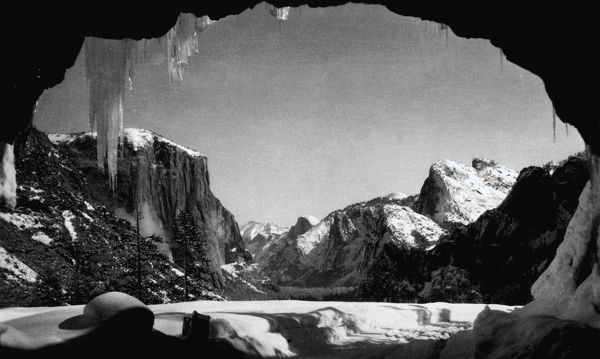
1890: Yosemite National Park is created, but Yosemite Valley and Mariposa Grove fall outside its boundaries. Local tourist rituals include a drive-through tree in Mariposa Grove and the evening "firefall," in which workers dump burning embers from Glacier Point to be admired by viewers in the valley below.
1892: The Sierra Club is born. John Muir is its president.
1903: President Theodore Roosevelt joins Muir on a three-day Yosemite camping trip. Three years later, the park is expanded to include Yosemite Valley and Mariposa Grove.
1916: The Adams family visits from San Francisco, including 14-year-old Ansel, who brings a new Kodak Brownie camera on his first Yosemite trip.
1919: The Sierra Club installs removable steel cables near the top of Half Dome to aid summertime climbers.
1968: The park service abandons the nightly "firefall."
1969: The drive-through tree in Mariposa Grove collapses.
2010: Park officials begin requiring Half Dome hikers to have permits.
2012: A summer hantavirus outbreak kills three visitors and sickens six others in tent cabins that went up in 2009 in the valley's Curry Village. The outbreak is blamed on waste from infected deer mice. Cautionary literature is posted and circulated. Ninety-one tent cabins are razed and replaced by others with fewer hiding places for rodents. More than 18,000 mouse traps are set. As of early June, no new cases of hantavirus (which often mimics flu symptoms at first) had been reported.
Source: National Park Service
Hiking Half Dome: What you need
To hike Half Dome, you need a clear, summery day, a permit, strong legs, strong lungs, food, water, a flashlight and a plan.
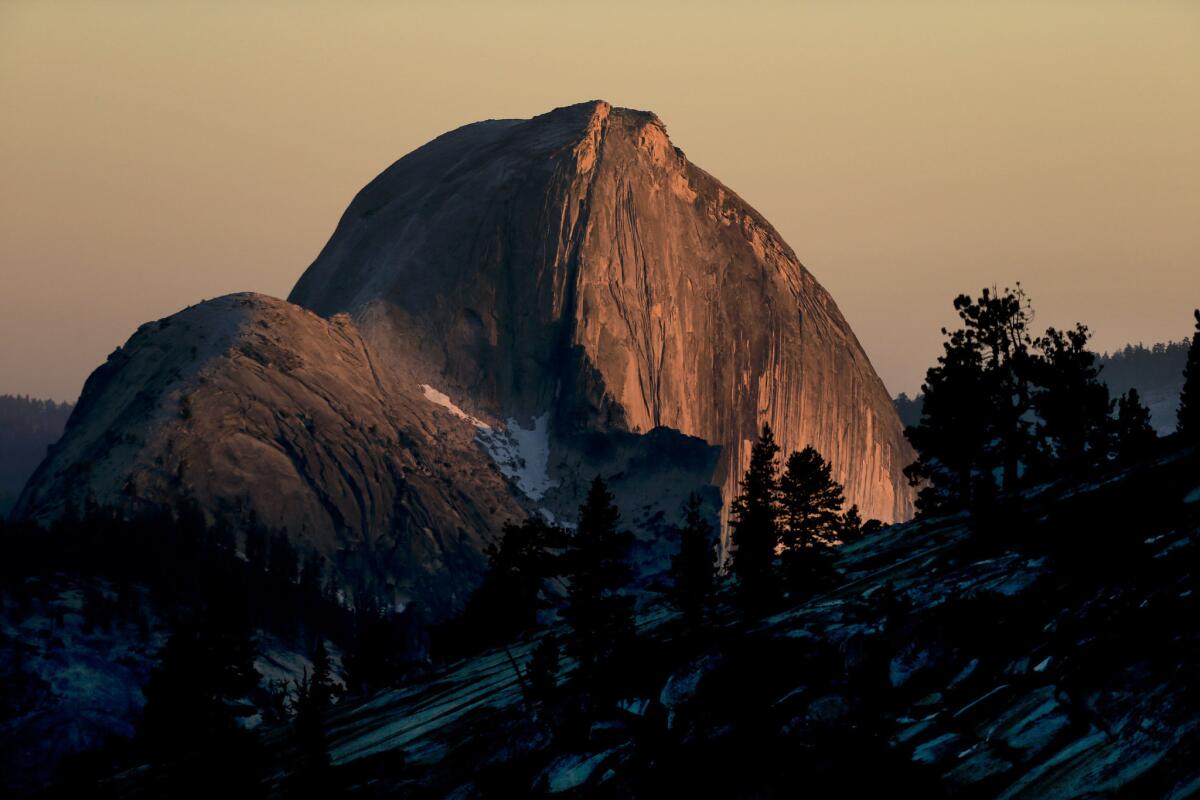
A clear, summery day. Because hiking Half Dome can be dangerous, the park service strongly discourages hiking it in the rain, when there are storm clouds or any time but in summer. Rangers say five hikers have died on the trail in the last decade, most losing their footing, often in the rain. To make things easier for hikers in the summer months, rangers put up removable steel cables just before Memorial Day most years to help climbers ascend the last 400 feet to the top. The cables come down around Columbus Day (in October).
A permit from the National Park Service. To keep the trail from clogging with traffic when the cables are up, rangers require that you have a permit, and they set a limit of 300 hikers a day. Fees are $12.50 (if you apply online) or $14.50 (by phone). Check the Yosemite website for more details.
Strong legs, strong lungs, food, water, flashlight and a clear plan. Rangers recommend you start at sunrise or earlier and set a non-negotiable turnaround time in case the afternoon drags on and you haven't reached the top. It's a 16-mile round trip from the valley with about 4,800 feet of elevation gain. Most people do it in 10-12 hours.
Details: nps.gov/yose
The view from a wedding preacher
The Rev. Autrey Nassar performs weddings in Yosemite, often working around animals. Lately, he's seen more elopements. 'They're the most fun,' he says.
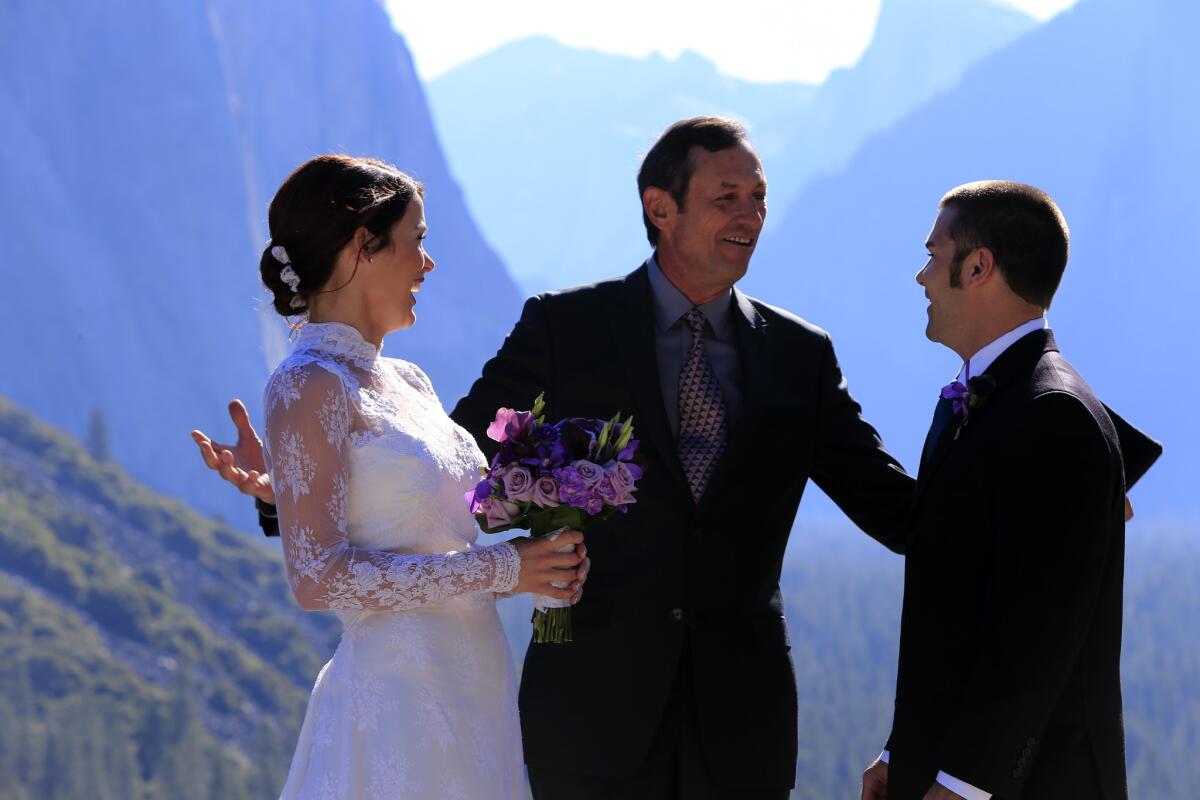
The Rev. Autrey Nassar, who has no particular church or denomination, goes to work in a landscape that Theodore Roosevelt called "a great solemn cathedral, far vaster and more beautiful than any built by the hand of man."
Nassar is a wedding preacher, and Yosemite is his turf. Ordained by the Universal Life Church in Modesto, he does 80 to 100 weddings a year in the park, often at the Yosemite Chapel (the oldest structure in the valley) or the Ahwahnee Hotel. Glacier Point, the Wawona Hotel and Bridalveil Fall are popular too.
Nassar, 61, isn't the only preacher performing weddings in the park. (Park officials issued permits for about 270 weddings last year, at $150 each.) But Nassar is the one you reach at yosemiteweddings.com. He's been doing weddings since 1975 but traces his current situation to 1985, when he and his wife, Donna, were living in Los Gatos, Calif. Nassar's brother decided to get married at the Yosemite Chapel and asked him to officiate.
It was a sunny day in February. Yosemite Falls was half-frozen and melting. As Nassar led the ceremony, chunks of waterfall ice dropped to the valley floor, booming like thunder. As soon as he got the chance, Autrey Nassar recalled, "I turned to my wife and said, 'Wouldn't it be great if we lived up here?'"
They moved in 1989. Nowadays, the couple lives on 18 acres in Mariposa at the western edge of the park, running the wedding business and the Carriage House at Twelve Oaks bed-and-breakfast.
One big change Nassar has seen lately: more elopements, which now amount to half of the marriages he performs. "They're the most fun," he said, because nobody's stressed-out over guests, logistics or enormous bills. (Nassar's fees for park weddings begin at $400.)
But there can be complications. Outside the Ahwahnee, Nassar often must work around deer or even bears (which are fond of a few nearby apple trees).
When I met Nassar at the Yosemite Valley panorama point known as Tunnel View, it was 9 a.m. and he'd just finished a ceremony. "This isn't a very common wedding site because there are usually many tourists here," he told me. "But — oh, my gosh, look at that."
Bride Cyrenea Piper stood posing for her wedding photographer, gently backlighted by the sun, the valley spread behind her. "Even I could take a good picture of that," Nassar said.
Moments later, Piper and her new husband, Josh, drove off, Nassar turned his attention to his next ceremony, and the day's first tour bus roared up.
Lead photo caption: Lighted by a very bright half moon, night becomes day during this 30-second time exposure of the skies over Half Dome, as seen from Glacier Point. (Mark Boster / Los Angeles Times)
Sign up for The Wild
We’ll help you find the best places to hike, bike and run, as well as the perfect silent spots for meditation and yoga.
You may occasionally receive promotional content from the Los Angeles Times.




